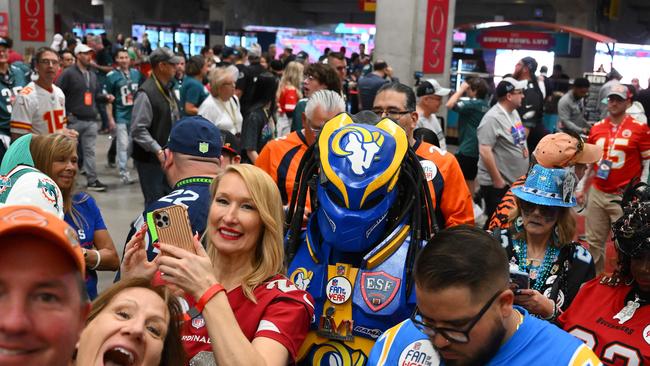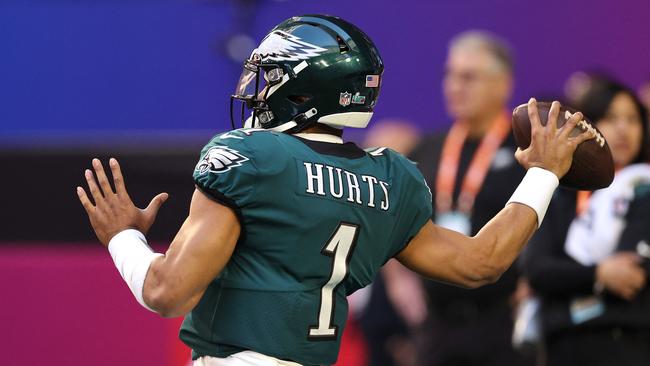Non-alcoholic beer ad in Super Bowl spotlights ‘dry economy’
Major beer sponsors have undergone a massive shift in its marketing for America’s biggest day by pushing its alcohol-free alternative as demand for the product skyrockets.

Sunday’s Super Bowl telecast is set to include what Heineken USA says is the first national commercial in the game for a nonalcoholic beer, putting a spotlight on the dry movement in booze.
Heineken USA plans to run a 30-second Super Bowl ad for its Heineken 0.0 nonalcoholic beer, enlisting actor Paul Rudd as Marvel’s Ant-Man to make the pitch.
The commercial during U.S. television’s biggest event of the year is a chance to reach the younger consumers who are often drinking less alcohol, said Jonnie Cahill, chief marketing officer at Heineken USA.
“That is not a trend; that’s not a fad,” Mr. Cahill said. “That’s a macro societal trend away from alcohol.” U.S. sales volume for the nonalcoholic versions of beer, cider, ready-to-drink beverages, wines, malt drinks and similar products grew about 25% to nearly $1.2 billion in 2022, according to global beverage alcohol data firm IWSR Drinks Market Analysis. That no-alcohol category is forecast to see volumes rise another 25% between 2022 and 2026.

The figures include sales in bars and restaurants along with traditional retail and e-commerce.
Meanwhile, the total U.S. alcohol category -- including both alcoholic drinks and versions with little or no alcohol -- declined 1% in 2022. IWSR expects total volumes to be relatively flat over the coming years.
Sales and advertising of no- and low-alcohol beverages are still a sliver of the traditional alcohol market, to be sure, and some category experts said investments in the category may be outstripping demand.
No- and low-alcohol’s volume share of the total alcohol U.S. market was 1.1% in 2022, according to IWSR. Sales volume in low- and no-alcohol was $2.5 billion, while the overall U.S. alcohol market totaled $188.3 billion.
But sales of no- and low-alcohol drinks have been fueled by a rising tide of health and wellness-oriented consumption, the firm said.
“Moderating alcohol consumption, avoiding the effects of drinking alcohol as well as staying in control are becoming increasingly important for both no- and low-alcohol drinkers,” said Brandy Rand, chief strategy officer at IWSR.
The most significant groups of no-alcohol or low-alcohol beverage consumers are millennials and people who drink no- or low-alcohol beverages on some occasions and full-strength beverages on others, according to IWSR.
Marketers are increasingly pursuing those consumers.

Beer marketers spent $81.7 million on national TV ads last month, according to television ad measurement firm iSpot.tv Inc. Ad spending to promote nonalcoholic beer on national television, by comparison, totaled $9.7 million in January, up from $1.4 million in January 2019. Most of the spending came from Heineken’s efforts to promote its nonalcoholic brand.
Athletic Brewing, a maker of nonalcoholic craft beer that was founded in 2018, has spent on streaming ads promoting its beverages, iSpot.tv said. Boston Beer Co.’s Samuel Adams has spent hundreds of thousands of dollars on television ads pitching its nonalcoholic IPA called Just The Haze, which it started selling in 2021, according to iSpot.tv. And Anheuser-Busch InBev used its sponsorship of last year’s FIFA World Cup partly to promote Budweiser Zero.
Boisson Inc., a retailer of nonalcoholic beer, wine and spirits with 10 stores in New York and California, said it is increasing its marketing spending. The company has raised $17 million in funding since its founding in 2021 and counts singer-songwriter Katy Perry, who co-founded nonalcoholic aperitif brand De Soi, among its board members.
Nick Bodkins, co-founder and chief executive at Boisson, said the Heineken 0.0 Super Bowl ad will both attract viewers to a known brand and potentially get consumers thinking about what else is in the category.
“There’s a lot more than a dusty can of O’Doul’s that the bartender [has to] blow the dust off of,” he said, referring to the Anheuser-Busch “near beer” that for years dominated the category. “It is so massively bigger than it used to be.” Even marketers outside the alcohol business have incorporated themes of sobriety.
Recruit Holdings Co.’s Indeed, the internet job site, recently released an ad called “Happy Hour,” in which a worker keeps an abstaining colleague company while others enjoy alcohol together.
The company was inspired by rising awareness of some workers’ struggles with addiction and recovery, said Indeed CMO Jessica Jensen.
“Advertising is a key part of popular culture,” Ms. Jensen said. “And if we don’t see real people and their challenges and overcoming those challenges reflected in marketing, then that’s a missed opportunity on the part of marketers.” Putting Heineken 0.0 in the Super Bowl will deliver benefits for more than just the nonalcohol brand, according to Mr. Cahill, the Heineken USA CMO.
“It’s really good for the fundamental health of the [overall] brand, because if I go back five years, and it’s ‘you don’t want to have a drink tonight, you don’t drink alcohol tonight,’ we can never monetize our relationship with you because you’re going to drink a Coca-Cola or a Perrier or whatever,” he said. “Whereas now if you choose not to drink, we can still have a relationship as a commercial entity because I’ve got something for you.” The increased interest could spur more marketing-focused businesses seeking to help new brands in the space grow.
SipSteady, a Kansas City, Mo.-based agency, launched in 2022 to work exclusively with nonalcohol brands, sober influencers and sober-friendly businesses, such as hotels or restaurants that want to work to offer beverages using zero-proof products.

Nonalcoholic beer on the Super Bowl stage could be a turning point for what the company calls the “dry economy,” said Sarah Pretorius, co-founder and CEO at SipSteady, and Kayla Mason, co-founder and chief operations officer.
But even some boosters sounded notes of caution on the hyper growth of the category.
Investors are keen to capitalize on the wellness trends in drinking, and nonalcoholic brands are easier to invest in because they don’t require dealing with the federal regulation involved with selling alcohol, said Helena Price Hambrecht, whose Haus brand of low-alcohol aperitifs stopped operating last year after a funding round fell through.
“No- and low-ABV is a movement that’s not going away, and it will continue to grow and take market share from alcoholic products,” she said. “That said, it’s likely that [venture capitalists] overfunded the category for its current rate of growth, and we’ll see a correction, much like we’re seeing [in] other markets. The best performing brands will survive.”
WSJ



To join the conversation, please log in. Don't have an account? Register
Join the conversation, you are commenting as Logout